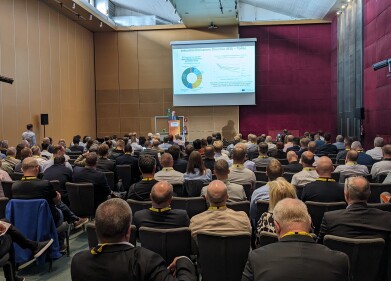Environmental laboratory
Monitoring of a Complete Process Line for the Phosphatising of Metal Surfaces Using an Atline Analysis System
Jan 01 2000
The basic phosphatising process consists of the etching reaction and the formation of the surface coating. After thoroughly degreasing and rinsing the metal workpieces, the phosphoric acid removes interfering
surface-bound metal oxides and increases the surface roughness. Subsequently the alkali phosphates react with the previously generated metal ions forming a layer of insoluble tertiary metal phosphates. Addition of metal cations such as Zn2+, Mn2+, Ca2+ or Ni2+ to the
phosphatising bath improves the quality of the coating.
At the industrial scale the phosphate coatings are applied to the metal surface of the workpieces using strictly defined process steps in different cleaning, degreasing, rinsing, activation and phosphatising baths. The various bath parameters have to be closely monitored
as they determine to a large extend the quality of the coating produced. The parameters determined in the cleaning, degreasing and rinsing baths are pH value, conductivity plus free and total alkalinity, while the phosphatising bath is analysed for free and total acids, nitrite or hydrogen peroxide, zinc and fluoride.
The described ProcessLab atline analysis system from Metrohm (Switzerland) monitors, records and documents the important analytical parameters of the entire phosphatising process. The combination of the analytical methods involved as well as the straightforward and
error-free handling via the well-organised user interface allow for complete process control. The analytical functions are supplemented by the integrated operation software that offers numerous possibilities for data processing and documentation of the measured values.
Additionally a barcode reader guarantees an unambiguous sample identification. The atline analysis system meets all requirements of modern phosphatising plants regarding process monitoring and documentation.
Digital Edition
AET 28.4 Oct/Nov 2024
November 2024
Gas Detection - Go from lagging to leading: why investment in gas detection makes sense Air Monitoring - Swirl and vortex meters will aid green hydrogen production - Beyond the Stack: Emi...
View all digital editions
Events
Jan 12 2025 Abu Dhabi, UAE
Jan 14 2025 Abu Dhabi, UAE
Jan 20 2025 San Diego, CA, USA
Carrefour des Gestions Locales de L'eau
Jan 22 2025 Rennes, France
Safety, Health & Wellbeing LIVE
Jan 22 2025 Manchester, UK



















